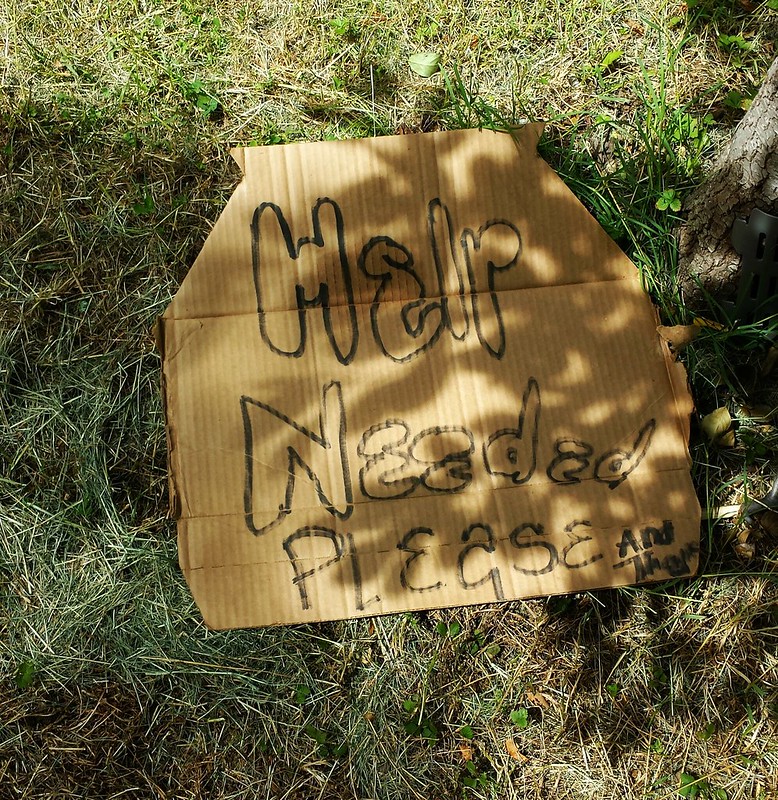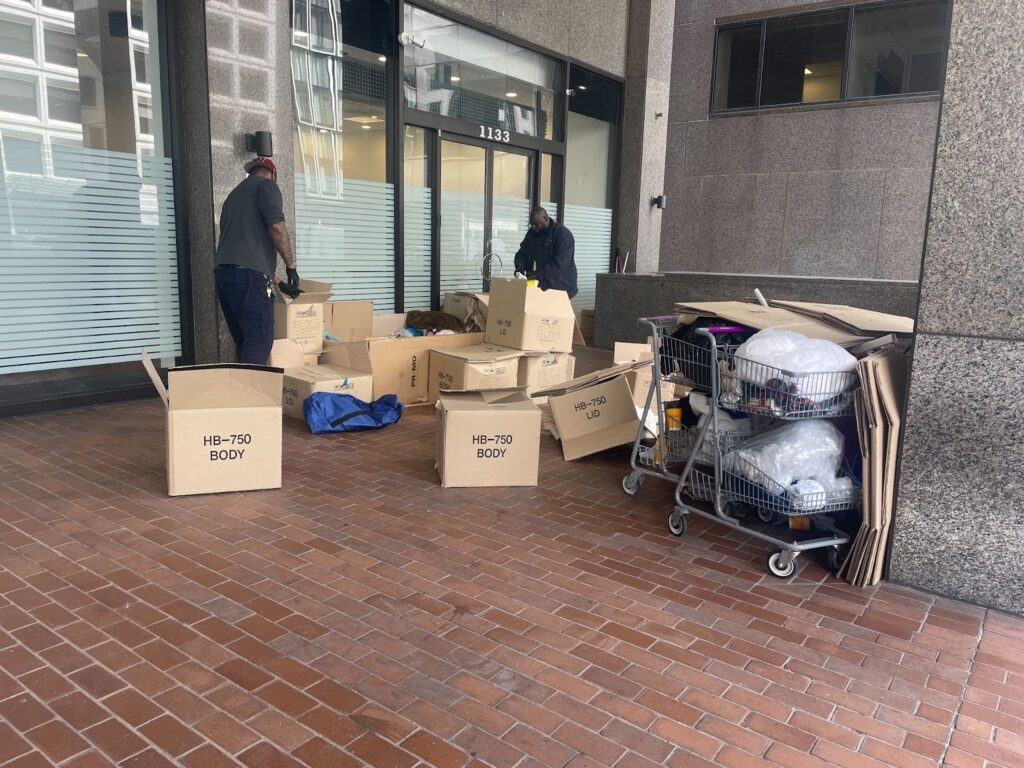This article was first published in Greater Greater Washington on April 29, 2021.
A bill introduced by Montgomery County Councilmember Craig Rice on April 20 would require a permit to solicit money or donations from vehicles on high-speed roadways. The legislation opens with a section on pedestrian safety, saying the county’s Vision Zero action plan “requires greater safety measures related to the dangerous activity of pedestrians soliciting and collecting items from the occupants of vehicles in roadways.”
But critics in Montgomery County are calling Rice’s legislation an “anti-panhandling initiative,” saying it isn’t about traffic safety but rather about “criminalizing unhoused communities.” Rice responded, saying he works closely with people experiencing homelessness and has supported services for them.
Can we please stop criminalizing unhoused communities? Enforcing something like this will not help get unhoused people supports they need. Rather, it will only see them harassed by law enforcement. Please reconsider @RicePolitics
— Brent Jamsa (@bcjamsa) April 20, 2021
“It’s not anti-panhandling,” Rice wrote on Twitter. “It’s pro-safety. It’s Vision Zero. I pray you care about the safety of ALL of those in our roadways like you say you do. Keep in mind the majority of those who are experiencing homelessness are Black. Let’s show we care about them and their lives.”
But Miriam Schoenbaum, a board member for the Action Committee for Transit (ACT), a Montgomery County advocacy group, said the bill as introduced doesn’t align with Vision Zero goals and doesn’t have much potential to improve pedestrian safety. “If I were going to introduce pedestrian safety bills, they wouldn’t focus on people panhandling in medians,” Schoenbaum said.
An effort with a history in Montgomery County
The effort has a history. In 2013, Montgomery County launched a campaign to try to discourage people from giving money to panhandlers. A task force had originally considered banning the practice, as has been done in other counties, but the county wanted to allow firefighters to raise money with their “Fill the Boot” campaign for muscular dystrophy; a state attorney general’s opinion concluded that banning some forms of roadside solicitation but not others could violate the First Amendment.
The campaign encouraged people to donate to organizations providing homeless services instead of handing out cash, but reports at the time questioned its efficacy. That messaging still exists on the county’s website, urging people to “give a hand up, not a handout.”
Rice first proposed a bill banning panhandling outright in Montgomery County in late 2017. That bill also drew opposition because of the Fill the Boot campaign.
What the current legislation does
The legislation introduced would require people to get a permit to solicit in roads with speed limits faster than 25 miles per hour. The permit, available in homeless shelters and cooling and heating centers, would be free and would ask for but not require a name and address. The permit would include “educational materials” on roadside safety and require people to not enter the roadway unless the light is red, leave the roadway when traffic signals allow traffic to move, and avoid soliciting after dark.
Those without permits won’t be punished, and it’s not clear how or whether the law would be enforced. The bill as introduced authorized county police to “instruct” people soliciting in the roadway that they need a permit. But after people on Twitter raised concerns about encouraging more interactions with police, Rice said he would remove all references to police in the bill, the Bethesda Beat reported. It’s not yet clear what the amended bill will say about enforcement.
Does this bill make people safer?
Rice said in 2017 he was inspired to introduce the bill banning panhandling after Richard Lee Cooper was struck and killed by a driver while panhandling on Middlebrook Road in Germantown in June that year. But the current legislation’s safety guidelines, which require permit holders to stay out of the road until traffic is stopped, wouldn’t have saved Cooper’s life. Cooper was killed while standing in the median along Middlebrook Road after a driver lost control.
Schoenbaum, of ACT, said that though the bill is justified by pedestrian safety concerns, it doesn’t actually address the pedestrian safety problems that are leading to most deaths in the county. At least 59 non-motorists have been killed in traffic crashes in the county since Cooper’s death. One of them, a pedestrian trying to cross the street, was killed just blocks up Middlebrook Road from where Cooper died. He wasn’t panhandling.
Though Rice is justifying the bill with Vision Zero, the county’s Vision Zero framework isn’t geared toward affecting pedestrian behavior. Instead, its goal is a transportation system “designed for speeds that protect human life.”
According to the Vision Zero website, the framework requires a “systems-based approach” focusing on the ways the built environment puts people at risk, and a key component is equity: the idea that “all people have the right to move about safely.”
“You don’t make roads safe by removing non-motorists from the road,” Schoenbaum said, saying that while safe pedestrian behaviors are important, most people who stand near fast moving two-ton vehicles are aware of the risks. A Vision Zero approach, she said, wouldn’t make pedestrians aware of the risks; it would reduce them.
“You can reduce your risk from getting killed as a pedestrian by never walking anywhere,” Schoenbaum said. “But that’s not Vision Zero.”
[Read more: Opinion: Pandhandling permits are a bad idea]








